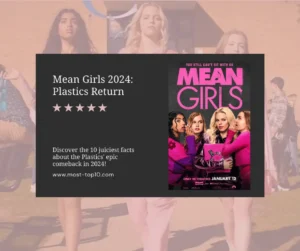Top 10 Italian Film Directors
From the first years of cinema, Italian filmmakers have been at the forefront of the international film scene, working in the market and presenting the medium. From experimental silent films, Italian cinema evolved and created a new genre of neoclassicism. Through realism he created many pioneering emotions by showing powerful and raw films made so far. in this artical i will discus about the Who is a famous Italian film director?, top 10 best italian films and Most Top 10 Italian Film Directors
The experiences of the Italian electorate and the class struggle between their people, especially throughout the period, gave Italia’s filmmakers a deep insight into the complexities of society and humanity.New The growth of the critical films of the realists put Italia together not only among the world’s leading medium nations but also in galvanized film designs around the world. greatest italian film directors
After neo-realism, Italian filmmakers went in additional bold directions. Some administrators took large-scale plots, Entered into a broader formal form of filmmaking with massive productions and epic runtimes. Others gained their fame through their experimental, and sometimes controversial, films. Many are still only engineered on their neo-realistic backgrounds, combining real components to create an imaginary, yet still realistic, Climate.
As the twentieth century progressed into the twenty-first and international cinema became more influential, Italian filmmakers were less underrepresented by their distinctive designs, though still a full life voice within the film world with their inventive, intense films. is maintained.
Most Top 10 Italian Film Directors
1. Federico Fellini (1920 – 1993)
Fellini is unquestionably the most prominent and internationally acclaimed of all Italian administrators in film history. Fellini is number top one Italian Film Directors. From his early beginnings within the neorealist movement, working under the retrospectively portrayed Roberto Rossellini, Fellini reimagined the medium of film by addressing a variety of themes. handjob Specifically category, gender and philosophical theories.
Of course, Fellini had many good collaborators throughout his career who ensured his inventive prosperity. He had many fruitful and vengeful relationships with terrifying actors, most notably Marcello Mastroianni, who was usually an adult male, though a sad soul, and from Fellini’s womb The Graves Museum and Married Woman, Giulietta Masina, places a lot of nave characters in the WHO unfortunate things. He collaborated on such masterpieces as La Strada and Night of Cabiria.
His legacy developed step by step into a respected producer though his Palme d’Or- Winning 1960’s masterpiece La Dolce Vita, Dynamic convention on plot and style. Fellini then continued to create some of the most critically engaging, and sometimes controversial, international classics such as the semi-autobiographical Eight and The Real Juliet of the Spirits, culminating in twelve praise nominations and multiple wins.
Fellini also formed a good bond with the Italian composer Nino Rota who created almost all of Fellini’s tributaries, creating not only cohesive music but also deep thematic motifs. Although Fellini’s looks and styles varied greatly over his vast career, His brilliant visionary ability could be a constant that shines through even in his weak films.
2. Vittorio Filmmaker (1901 – 1974)
WHO, one of the pioneers of the neo-realist movement, continued his fine career in later designs, The Vittorio filmmaker is one of the most respected and affectionate Italian filmmakers. Starting out as a stage actor,
The filmmakers became familiar to many film crowds and when many attempted to make their jailbroken 1946 film Shoeshine, about 2 impoverished youths in the Italian Republic. Having already added major directing abilities, the filmmaker carried on his legacy by making 2 of the most powerful films of the time; Umberto D., Associate in Nursing The story of a past benefactor and his dog, and his masterpiece The Bicycle Thief Who Completely Defined Neo-Realistic film though thinks one of the best every movie, period.
As neo-realism lost its recognition, the filmmaker did not fade into obscurity like many of his peers, but maintained the quality, Especially with his humour. With the help of the acting abilities of Marcelo Mastroianni and Sofia Ciccolone, The director captured the attention of the film world with the successive hits of Tomorrow, Tomorrow and In Days and Wedding Italiano-Style, each of which were nominated for Academy Awards. While his name as a great producer may not be as widespread as other classic administrators these days, His selection and innovation within the craft has made him one of the most important visionaries of all time.
3. Michelangelo Antonioni (1912 – 2007)
Michelangelo Antonioni is one of the most polarizing administrators on this list, not for reasons of controversial or bizarre content like many others, though thanks to his minimal, wandering plots, slow pace, and very long time. .
Their actions are typically depicted as “mood pieces” rather than easy stories because they tend to worry much more about the characters’ feelings than the action itself.
Because of this, many viewers, especially first-time viewers of Antonioni, will feel bored and cold by his films. While his claims are not unfounded,
On review there is a lot of poetic talent hidden in Antonio’s works and although there may not be much action, there is still a lot to be sent.
As many others on this list, Antonioni continues to exist within the neo-realist movement, although he quickly created a novel style of his own, distinct from the typical storytelling.
His breakthrough film, and for many of his masterpieces, was L’Aventura, a strong story about recent society’s self-love and the way, human souls would be lost. Their next 2 films, La Notte and L’Eclise, were equally acclaimed and were about similar themes, due to which the 3 was generally regarded as a trio. After these successes handjob
Antonioni made a series of films in English films with one of his most famous films, The Blow-Up. While his films were never a box office hit, or rarely so well known outside the art-house crowd, the innovation and vision that Antonioni gave to the medium is irreplaceable.
4. Luchino Visconti (1906 – 1976)
Born in 1906 to the Italian elite, Luchino Visconti was raised in Associate in a nursing environment of high culture, which at an early age turned to theater and music. During the Second War, his lavish upbringing, political party affiliations and socializing became necessary to focus his films on-Economic class of the Italian Republic. With his first film, Oscien, the filmmaker started the Italian neorealist movement, paving the way for important administrators such as Vittorio filmmaker and Roberto Rossellini.
La Terra Trema and Bellissima also followed this theme, Showcasing a far more serious atmosphere than his future films, though still which specialize in the complexities of human emotion. With Senso, the filmmaker continued to focus on socio-economic class struggles, though exploring the lavish and money-making production that could become a staple of his films to return.
in the 60s, The filmmaker modified the subject matter of most of his films to focus on squares such as Panther, Death in City and Ludwig, thereby shaping a replacement era in Visconti’s filmmaking, which continued until the end of his career. The subjects of his films are not always pleasant,
However the sweetness of his craft persists throughout his time. The beautiful filming and framing make each scene a bit of art as well as the detailed historical sets of his films are exceptionally realistic yet stunning.
Always encouraging score with Associate in Nursing, Visconti’s films not only through his scripts and actors, Rather creates powerful emotions through his dynamic and powerful use of film.
5. Pier Paolo Pasolini (1922 – 1975)
Gospel according to Matthew
Pasolini was one of the most prominent jewelers and one of the most prominently disputed Italian administrators. Originally starting his creative career as a writer, he eventually transitioned to film as his medium of choice.
His first film, Accattone, Criminal, Addressing beggars and prostitutes, thanks to the plot of the film, he began his directional career, which garnered an enormous amount of attention from everyone.
Pasolini’s profile grew with his subsequent films such as Mamma Roma and Gospel in Matthew. Not only to attract a cult following but a strong needed response.
As his films progressed, so did Pasolini’s ability as a producer and filmmaker, while maintaining his engaging, but controversial material. Most of his later films were quite formidable compared to his early minimalist films. The most notable of those later films are the 3 “Trilogy of Life” films (The Tale,
The Decameron and Arabian Nights) and his most controversial film, Salo: One Hundred and Twenty Days of Sodom.
In addition to the content of his films, Pasolini with his unconventional personal life- At one time the general public was not so open-minded, due to the fact that he was homosexual and communist. Although not everyone could appreciate the many offensive aspects of Pasolini’s work, His revolutionary career has been described as one of the most important and innovative in all Italian cinema.
6. Roberto Rossellini (1906 – 1977)
anna-magnani-rom-open-City
One of the best neo-realist administrators of many oceans, Rossellini was probably the most iconic of the first Italian filmmakers. Starting with fascist government funding, Rossellini’s first 3 films were primarily information works promoting support for the war. After the fall of that regime, Rossellini was no longer busy making alternative types of films, resulting in her first masterpiece Rome, Open city about the antagonist- Fascist resistance fighters during the occupation of Rome in War II. This major success was the first of Rossellini’s “neo-realist trilogy”, which additionally featured Payson,
A series of words about soldiers, and a film about the destruction of the German people during the autumn of the European country, Year Zero, Nazi Germany, included.
After this groundbreaking series of films, Rossellini entered a replacement segment of his career, In which he was related to Swedish player good actress. Together they recorded six acclaimed footages, including, among others, Stromboli and Journey to the Italian Republic. While their cooperation was fruitful, This was also very controversial because when the affair started, both of them had married people.
He also had several children, including the player Isabella Rossellini.
Roberto continued to make films until his end with several collaborations with universities, However, The success of his sensible early films has never been matched.
7. Sergio Leone (1929 – 1989)
once in the west
In addition to the administrators still active, The Sierra Leone monetary unit has the smallest future labor bodies on this list. Like many Italian administrators of his era,
The Sierra Leone monetary unit comes into existence in the style within the sword and sandal genre, part directional in the last days of the urban center and his first directed image The Colossus of Rhodes.
His first successful film was A fistful of rupees, who was the head of his famous Spaghetti Western trio, In which Clint Eastwood was portrayed as “The Man with No Name”. Akira Kurosawa’s collaborator in the nursing adaptation of Yojimbo, the film kickstarted the spaghetti western genre and catapulted Eastwood to high status. 2 future films within the trio, many more sensible for several bucks Dangerous and ugly too, were equally well received and coveted.
After their legendary trio, The Sierra Leone monetary unit directed only three films. The first Western epic was Once Upon a Time in the West starring the thespian, Jason Robards and Claudia Cardinale and the list included 2 alternate administrators,
The film was produced and co-written by Dario Argento. The second unlikely boy-action film was Duck, you sucker! Major Rod Steiger and James Coburn.
Leone’s final film, and some of his biggest, biggest badass film, was Once Upon a Time in America, which follows a group of human goons,
Who becomes the most powerful gangster of Big Apple. His films are in order of Ennio Morricone’s picture score.
8. Dario Argentina (1940 -)
While the Mario Bava Giallo type of horror may have been fictional, Dario Argento formed the allegorical and partial possibilities of the genre. Ab initio started out as a film critic and journalist, Argentinian participating in the filmmaking scene when he and fellow director filmmaker helped write the story for Sergio Leone’s Once Upon a Time in the West.
Soon after, Argentinian directed his first film, The Bird with the Crystal Plum, which was a direct success and soon became one of the Giallo films of every shape, greatly spreading the quality of the genre. He then went on to do 2 more thrilling films, The Cat o’ 9 Tales and 4 Flies on Gray Velvet, finishing associate in nursing with the “Animal” trio.
As one of the pioneers in genre horror admins, Argento then directed one of the best giallo films of all time, with Deep Raid galvanized Yankee filmmakers such as John Carpenter taking direct scenes from the film, within the slasher genre. started working. And it includes electronic music, similar to the Argentine sound recordings by the band’s Wicked Spirit.
The momentum didn’t wane, Argento then continued to introduce the genre with his artistic, experimental masterpiece Suspiria, a pair of witches managing a ballet college. Argentine, to this day, continues to make horror films, and although his films are becoming less thrilling and no-hits due to Giallo’s lack of recognition, many of his classics from his time remain some of the best horror films of all time. movies.
9. Mario Monicelli (1915 – 2010)
One of the most prominent producers, though one of all the major scandalously unknown Italian masters, Mario Monicelli is perhaps the most iconic iconic mastermind of the Italian comedy genre.
Beginning in Call of Nineteen Thirties, writing screenplays and assistant director, Monicelli made his directorial debut in 1949, collaborating with fellow filmmaker Steno and comedian Toto, with whom he worked for eight films. However, it wasn’t until Fifteen Films later that his first work, Fifteen Films, returned with a massive deal, the classic heist film on Madonna Street in 1958, which also starred a young Marcello Mastroianni. From there, Monicelli became one of the most important names in all of Italian cinema.
Some of her other good works, which were largely produced within consecutive decades, include the medieval knight’s story For Love and Gold, the socialist story of a worker’s strike The Organizer, and the dark revenge comedy The Woman with the Shooting Iron. Huh. By general critical agreement, his biggest and most powerful film is that of World War I, the story of 2 soldiers whose comedic accidents draw close to the horrors and social contradictions of war throughout a coaching camp and battle field unit.
Although Monicelli’s fame is less than that of many contrasting masters on this list, his raucous talk and heavy undertones play many of the most enjoyable poignant cinema.
10. Bernardo Bertolucci (1940 -)
Starting to work with director Pier Paolo Pasolini, it’s no surprise that Bertolucci has managed to garner his fair share of controversy over his career. Beginning his directional career within the sixties, Bertolucci landed his first success before the revolution with enthusiasm, which showed the director’s attention to detail and good type.
His next big hit, and perhaps his masterpiece, was the cinematographic marvel The Conformist, which, along with fine art style, lighting, and camerawork, opted for a troubling plot that, under pressure from the fascist government of his previous friends. activates.
Unlike some of the fine administrators on this list, Bertolucci’s body of labor was not limited to at least one genre or one era the filmmaker hit organically throughout his career. Within the 2000s, Bertolucci achieved significant success with his film The Dreamers concerning sexually enterprising students and film lovers. In the eighties, Bertolucci’s Chinese epic The Last Emperor won nine Academy Awards, along with Best Director and Best Image.
His most famous film, or the infamous Count on Who You Raised, was the 1972 film Last Tango in Paris chiefs Marlon Brando and Maria Schneider. The 2 play associate age-gap couple who, while not telling each other anything about themselves, interact in different sexes to deal with recent problems in their lives.
The graphic nature of the film and the manipulation of the actors by Bertolucci garnered some scrutiny over time, especially as the actors began to condemn the film, although it remains one of the most powerful Italian films of all time.




![Top 10 Largest Cities in the World By Population [2024]](https://most-top10.com/wp-content/uploads/2024/04/Top-10-Largest-Cities-in-the-World-By-Population-2024-300x169.webp)




